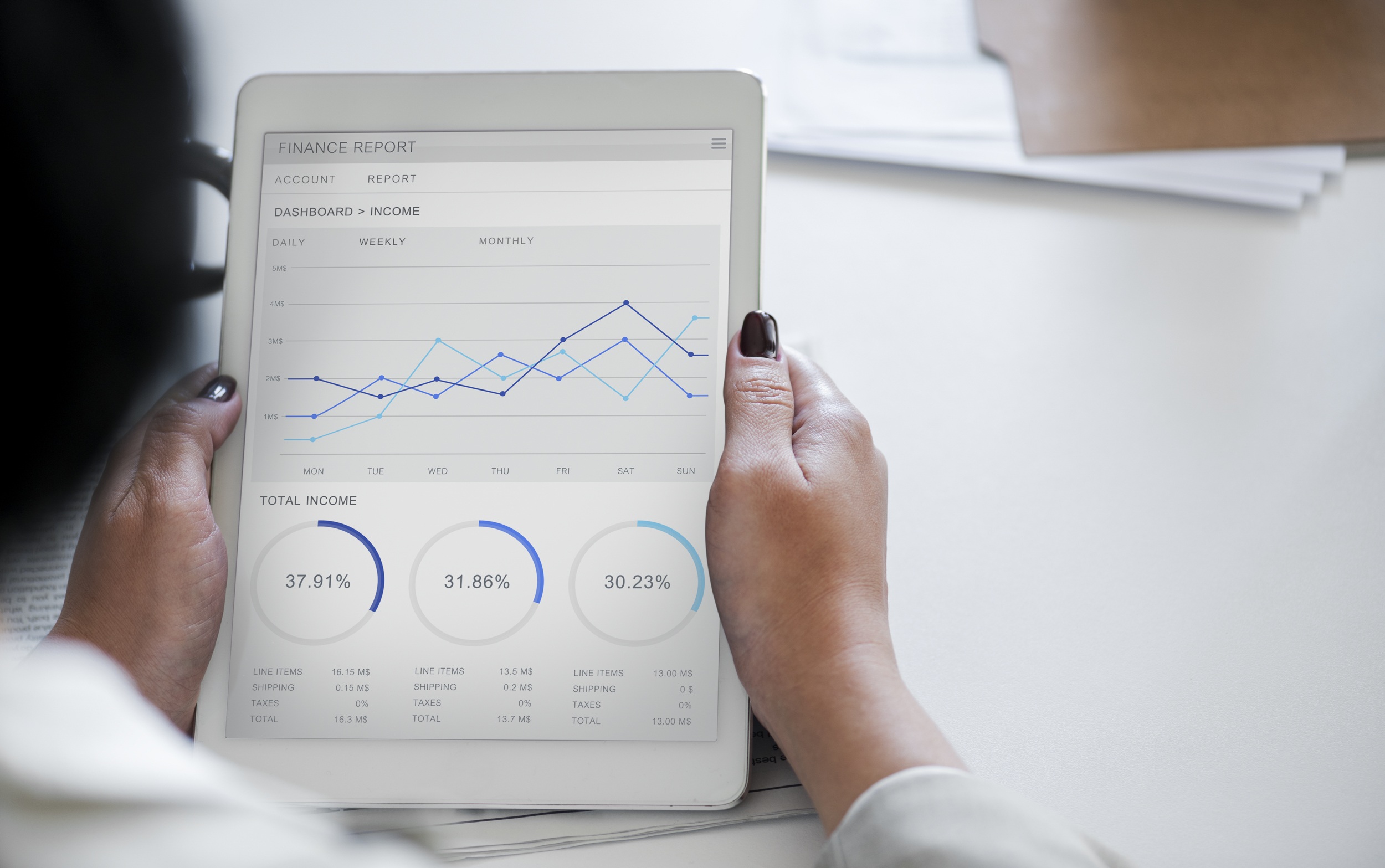Power BI – a comprehensive platform for data analysis
Power BI is a tool created by Microsoft that allows integration, analysis and visualization of data from various sources. Importantly, working on them can be done in real-time. Power BI provides easy access to information on both desktop computers and mobile devices. Also importantly, the tool can connect to a wide range of data sources, such as Excel, SQL databases, cloud services (e.g. Azure, Google Analytics), as well as local ERP systems. Microsoft Power BI also has the advantage of its intuitive interface, which does not require users to have advanced technical knowledge. This allows managers to create reports and dashboards independently, reducing dependence on IT teams. According to Gartner’s 2023 report, Power BI is the most widely used data analysis tool among mid-sized companies, with more than 50% market share in BI (business intelligence) tools.
How does Power BI make managers’ jobs easier?
1. Automation of KPI reporting and monitoring
One of the most important uses of Power BI is its ability to automate reporting and monitor key performance indicators (KPIs). With Microsoft Power BI, managers can create interactive dashboards that monitor the performance of their teams or entire departments in real time. These reports can be configured to update automatically based on defined schedules or in real time, allowing managers to make quick and accurate decisions. For example, in a retail company, Power BI can monitor metrics such as sales levels, margins or operating expenses. These dashboards can be accessed on a variety of devices, allowing quick access to information regardless of work location. Managers can also set alerts to notify when certain KPI thresholds are exceeded, eliminating the need to manually monitor each indicator.
2. Advanced data visualizations
One of the key elements of Power BI that sets it apart from other data analysis tools is its advanced visualization features. Microsoft Power BI offers rich visualizations, such as bar charts, pie charts, geographic maps and Gantt diagrams. In addition, users can create their custom visualizations, allowing reports to be fully customized. An example of using these features is analysing sales performance in different regions. Using a geographic map in Power BI, a manager can see real-time sales performance in each region, making it easier to identify areas needing additional support. These visualizations are interactive, meaning clicking on a region or product allows for immediate, more profound analysis.
3. Forecasting and data modeling
Power BI also enables advanced analytical tools such as forecasting and data modelling. These functions are handy for managers who need to predict market trends and plan strategies for the future. Power BI uses machine learning algorithms to analyze historical data and predict future performance. An example of such a function is forecasting sales based on previous years’ data. Managers can use these forecasts to plan budgets, resource allocations or marketing campaigns. With Microsoft Power BI, they can gain insight into potential changes in the market, allowing them to better prepare for possible challenges.
4. Integration with other Microsoft tools
Power BI integrates perfectly with other Microsoft tools like Excel, SharePoint, Dynamics 365 and Teams. This makes it easy for managers to move data between different applications, greatly simplifying work. For example, reports created in Power BI can be shared in Microsoft Teams, making it easier for teams to collaborate. In addition, Microsoft Power BI allows easy data migration from Excel to advanced analytical models. This is important because many companies still base their analysis on spreadsheets. Integration with Excel allows users to continue working with data in a familiar environment using additional Power BI capabilities.
5. Security and access management
Power BI also offers advanced data access management features, which is extremely important for protecting information. Managers can control who has access to individual reports, which provides greater security for sensitive data. Different levels of access can also be defined so that users see only the data that is relevant to them. For example, in a company with a matrix structure, managers of different departments can only access data related to their teams. At the same time, management can see the overall picture of company performance. This approach increases transparency and makes it easier to control the flow of information in the organization.
Advantages of implementing Power BI for managers
Power BI is an invaluable tool for managers, offering numerous benefits. First and foremost, it allows the automation of many reporting processes, which reduces the time needed to collect and analyze data. Thanks to advanced visualization features, managers can better understand data and react faster to changing market conditions. Integration with other Microsoft tools further increases productivity by eliminating the need to use several different systems. There are also financial benefits to implementing Power BI. According to Forrester research, organizations implementing Power BI have seen an average 366% return on investment over three years, thanks to time savings and more efficient data management.
Summary
Power BI is a powerful tool that changes how managers analyze data and make decisions. Its intuitive interface, advanced visualization, forecasting features and integration with other Microsoft tools make it ideal for managers at any level. Implementing Power BI not only streamlines work, but also brings tangible financial benefits, making it one of the most essential tools in modern business.
